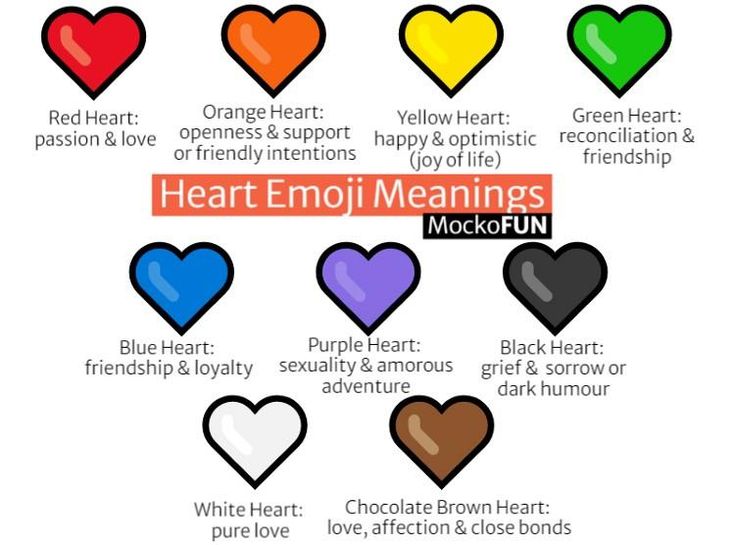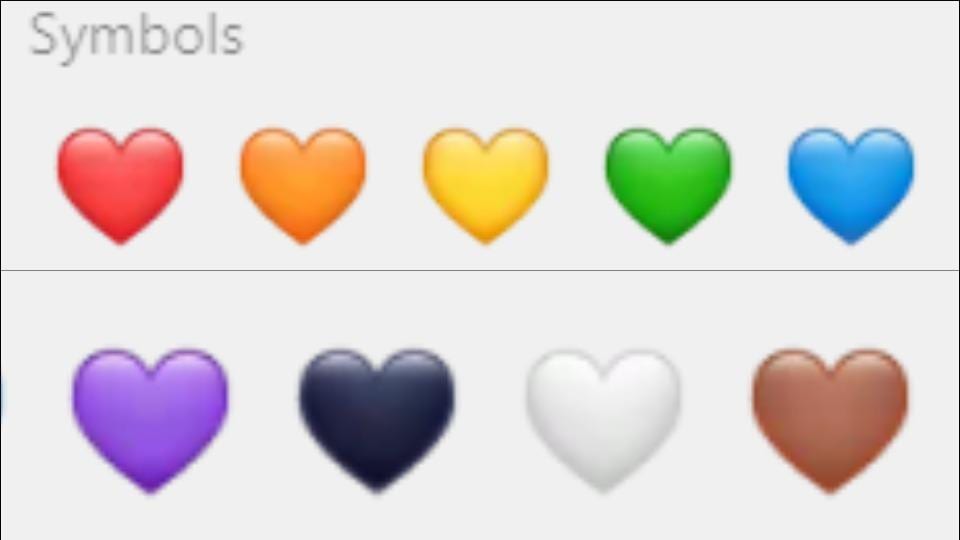Friendship is one of the most cherished relationships in our lives, and in today’s digital age, heart emojis have become a common way to express our emotions. But when you receive a heart emoji from a friend, do you ever wonder what it truly means? Can different heart colors indicate different types of friendships?
The yellow heart is often considered the best representation of friendship, symbolizing warmth, happiness, and platonic love. But other colors—like blue, green, and orange—also carry significant meanings in friendships. At FEC Vietnam, we’ve extensively researched the symbolism behind each heart color to help you better understand the emotions behind these emojis.
What Does Each Heart Color Mean in Friendship?
Heart emojis come in a variety of colors, each carrying its own message. While the red heart is often associated with romance, several other heart colors are commonly used to express strong friendships.
Yellow Heart: The True Symbol of Friendship
The yellow heart 💛 is widely recognized as the ultimate friendship heart. It represents:
- Happiness and warmth: Yellow is a color that evokes joy, optimism, and positivity, all of which are key in strong friendships.
- Loyalty and trust: Unlike the red heart, which can carry romantic connotations, the yellow heart strictly signifies platonic affection and appreciation.
- Snapchat’s best friend badge: On Snapchat, a yellow heart appears next to your #1 best friend, meaning you interact the most with this person. This feature has cemented the yellow heart’s status as the friendship heart in digital culture.
💡 Example: If you send a yellow heart to a friend, it means you genuinely appreciate them in a friendly, non-romantic way. It’s perfect for celebrating strong, supportive relationships.
Blue Heart: Trust and Loyalty in Friendship
The blue heart 💙 is another popular choice for friendships, representing:
- Loyalty and dependability: Blue is often linked to trustworthiness, making it a great emoji for long-term friendships.
- Deep platonic bonds: While it may lack the warmth of a yellow heart, the blue heart symbolizes strong, dependable friendships that withstand the test of time.
- Masculine friendship tones: Many people use the blue heart in male friendships, where emotions are more subtle yet deeply valued.
💡 Example: If a friend constantly checks up on you, supports you through difficult times, and remains loyal, a blue heart emoji can be a way to acknowledge their unwavering friendship.
Green Heart: Growth and Positivity in Friendship
The green heart 💚 represents growth, renewal, and positivity in friendships. It is often associated with:
- Supportive friendships that encourage growth.
- Friends who bring positive energy into your life.
- Healing and emotional well-being in relationships.
💡 Example: If you have a friend who always motivates you to improve, whether it’s in your career, fitness, or personal life, sending a green heart can symbolize your appreciation for their role in your personal growth.
Other Heart Colors and Their Friendship Meanings
| Heart Color | Friendship Meaning |
|---|---|
| Orange Heart 🧡 | Symbolizes enthusiasm, energy, and a fun, lighthearted friendship. |
| Purple Heart 💜 | Represents admiration, respect, and sometimes strong emotional bonds in friendships. |
| Red Heart ❤️ | Although often romantic, it can be used to show deep appreciation and love for close friends. |
💡 Example: If you want to express deep gratitude towards a friend, a red or purple heart can help convey that emotion, but be mindful that some people may interpret a red heart as romantic.
The first half of this article has introduced you to the various heart colors used in friendships and their meanings. Stay tuned for the second half, where we will dive deeper into why the yellow heart is the best representation of friendship, how to use these emojis effectively, and FAQs about heart colors and their significance in friendships.
Why the Yellow Heart Represents Friendship the Best
Throughout history, colors have played a crucial role in human communication, influencing emotions, cultural symbols, and even digital expressions. Among all heart colors, the yellow heart stands out as the most authentic representation of true friendship, and for good reason.
Psychological Meaning of Yellow in Friendships
Yellow is the color of happiness, warmth, and positivity. It’s been scientifically proven that yellow enhances mood and fosters positive energy, which aligns perfectly with the essence of a strong friendship. According to color psychology studies, yellow is often associated with:
- Optimism and joy: Friendships thrive on happiness, laughter, and good times.
- Clarity and communication: True friends communicate openly and honestly.
- Trust and reliability: Friendships built on trust tend to last a lifetime.
🔍 Case Study: The Role of Yellow in Social Interaction
A 2010 study on color perception conducted by researchers at the University of Rochester found that yellow is one of the most attention-grabbing colors, often linked to positivity and mental well-being. This aligns with how friendships should make us feel—safe, happy, and appreciated.
How Social Media Popularized the Yellow Heart
In the digital age, emojis are more than just symbols—they carry real-world emotional weight. The yellow heart gained mainstream recognition when Snapchat introduced its “Best Friend” feature. If two users interact frequently, a yellow heart appears next to their name, solidifying its status as the friendship heart.
💡 Example:
- If you send daily messages to your closest friend on Snapchat, you’ll see a yellow heart next to their name.
- If your interactions decrease, the heart disappears—symbolizing a weakening friendship.
This feature transformed the yellow heart into a cultural phenomenon, reinforcing its association with strong, active friendships in digital communication.
📌 Did You Know?
According to Unicode Consortium reports, the yellow heart emoji is one of the most used heart emojis globally for non-romantic relationships, proving its significance in modern digital friendships.
How to Use Different Heart Colors to Strengthen Friendships
When to Use a Yellow Heart in Conversations
Using the right heart color in digital communication helps ensure that your message is interpreted correctly. The yellow heart is ideal for:
✔ Celebrating friendship anniversaries – Send a yellow heart to commemorate the day you met or a milestone in your friendship.
✔ Expressing gratitude – When a friend supports you, a yellow heart shows appreciation without romantic connotations.
✔ Encouraging a friend – If someone is feeling down, a yellow heart can act as a symbol of encouragement and positivity.
💡 Example Text Messages:
- “You’re seriously the best! Couldn’t have gotten through today without you 💛”
- “So grateful to have you in my life! You’re amazing 💛”
How Other Heart Colors Affect Friendship Communication
It’s essential to understand that different heart colors can influence the perception of a message. Sending the wrong color could lead to misunderstandings.
| Heart Color | Best Used For | Potential Misinterpretation |
|---|---|---|
| 💛 Yellow Heart | Expressing pure friendship and appreciation | None—universally accepted as a friendship emoji |
| 💙 Blue Heart | Trust, loyalty, and deep platonic bonds | May seem too formal or distant |
| 💚 Green Heart | Encouragement, growth, and positive energy | Some people associate it with jealousy or envy |
| ❤️ Red Heart | Strong emotional connections, often in close friendships | Can be mistaken for romantic feelings |
📌 Tip from FEC: If you’re unsure which heart to send, stick with the yellow heart to keep the message friendly and clear.
FAQs About Heart Colors and Friendship
Can a Red Heart Be Used for Friendship?
Yes, but be careful. The red heart is traditionally linked to romance and deep love, so it can sometimes send mixed signals in friendships. If you want to emphasize a strong friendship without romantic undertones, the yellow or blue heart is a safer choice.
💡 Example:
- ✅ “You’re my best friend! 💛” (Clearly platonic)
- ❌ “Miss you so much! ❤️” (Could be misinterpreted)
Why Do People Use Different Colors for Friendships?
Friendships come in many forms—some are lighthearted and fun, while others are deeply supportive and long-lasting. The variety of heart colors allows people to express different emotions within friendships.
Famous Example:
- Taylor Swift and Selena Gomez are known for their long-term friendship and often use yellow hearts in social media posts to show their appreciation for each other.
Do Heart Colors Change Friendship Meanings Over Time?
Yes, emoji meanings evolve. For example:
- The purple heart was once only used for admiration, but now it’s associated with military honor and deep emotional support.
- The blue heart has gained popularity among male friendships where emotions are expressed in a subtle way.
According to FEC Vietnam’s Emoji Trend Reports, social media platforms like TikTok and Instagram have significantly influenced emoji meanings in recent years. This is why it’s important to stay updated on how people use heart emojis in different contexts.
Conclusion: The Best Heart Color for True Friendship
In the ever-evolving digital world, heart emojis have become a language of their own, helping us express our emotions instantly. Among them, the yellow heart reigns as the ultimate symbol of friendship. It embodies happiness, appreciation, and unwavering support—qualities that define the strongest friendships.
At FEC Vietnam, we specialize in deciphering the true meanings of emojis, tracking their cultural shifts, and helping you navigate digital communication with confidence. Whether you’re sending a message to your best friend, a supportive colleague, or a long-time companion, using the right heart color ensures that your words carry the intended meaning.
💡 Final Takeaway:
- For a best friend? Use the yellow heart 💛
- For a trusted companion? The blue heart 💙 is a great choice
- For someone who helps you grow? The green heart 💚 fits perfectly
Master emoji etiquette with FEC Vietnam and enhance your digital communication like never before! For more insights into emoji meanings, updates, and best practices, visit fecvietnam.edu.vn—your trusted source for decoding emojis in the modern world.

